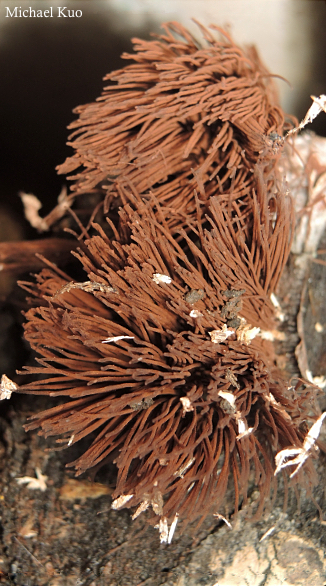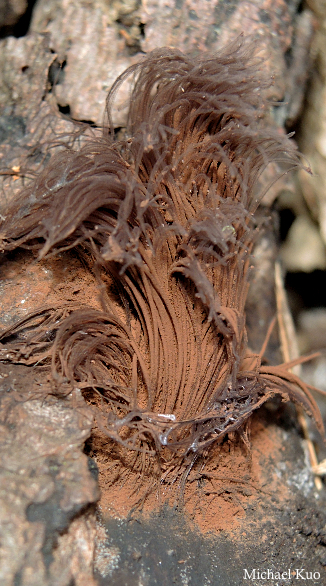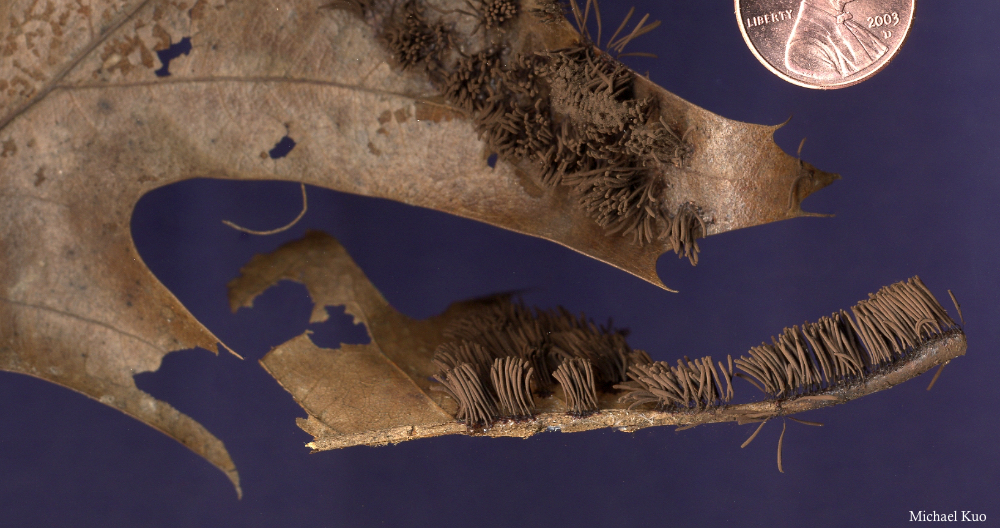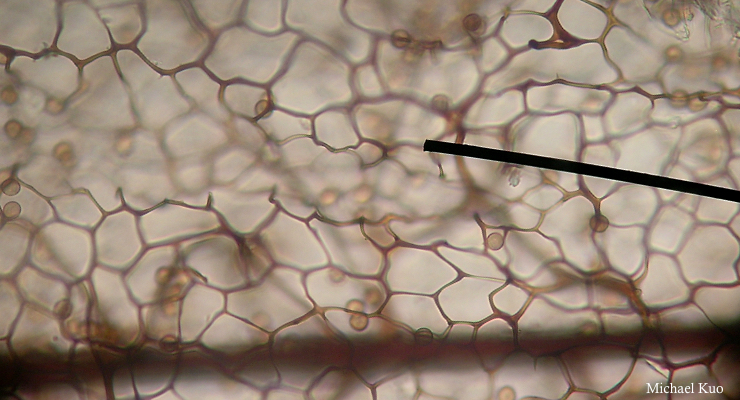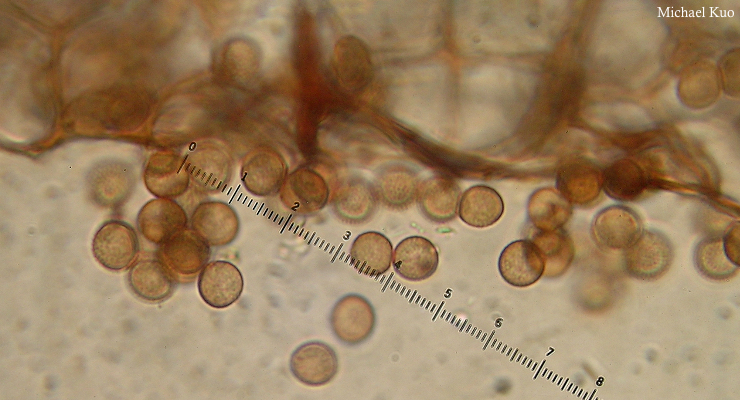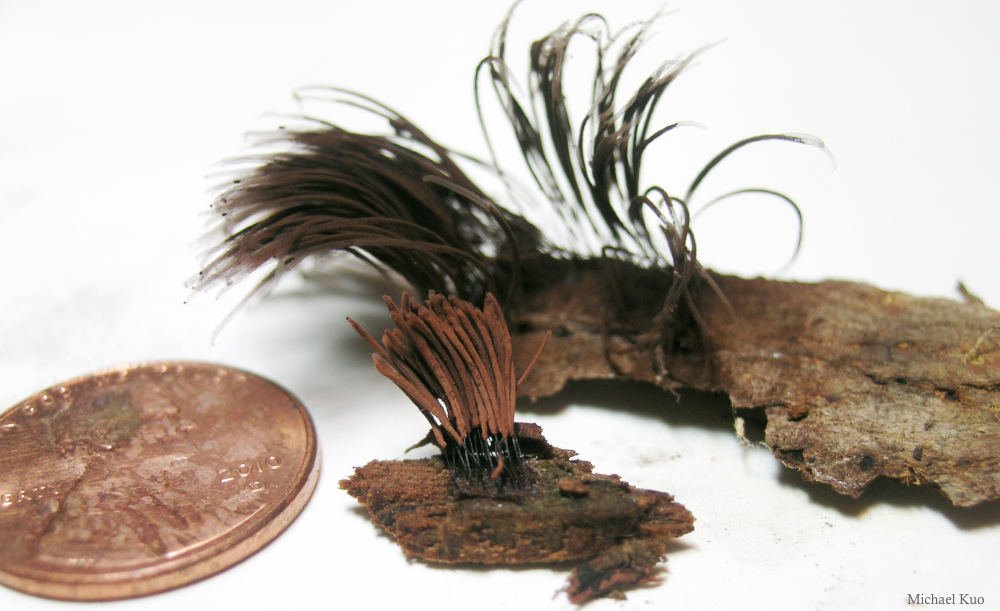 Stemonitis species (Chocolate tube slime mold) |
|
Stemonitis slime molds occur throughout the Midwest, and while the individual species in this genus can be difficult to identify, often requiring microscopic examination, the genus can be recognized by the fact that mature fruiting bodies look like tiny chocolate tubes, mounted on even tinier, dark stems. Like other slime molds, Stemonitis species creep around for a while, consuming nutrients and looking for a good place to make babies. In this stage, known as the "plasmodium," species of Stemonitis look like tightly packed masses of slimy white frog eggs, or little piles of soggy, decaying, white rice. Eventually, however, the Stemonitis stops creeping and transforms itself into a stationary spore factory—a "sporangium" (plural, "sporangia") that sits on top of a tiny stem. Look for Stemonitis species on decaying, bark-less logs and sticks, in the woods or in urban locations. |
 midwestern range |
|
|
|
|
|
|
|
|
|
|
|
|
|
|
References: Farr 1981, Stephenson & Stempen 2000, Nibblet 2017, Ing 2020. Kuo, Michael & Melissa Kuo (September, 2020). Stemonitis species (chocolate tube slime mold). Retrieved from the midwestnaturalist.com website: www.midwestnaturalist.com/stemonitis.html All text and images © , midwestnaturalist.com. |


